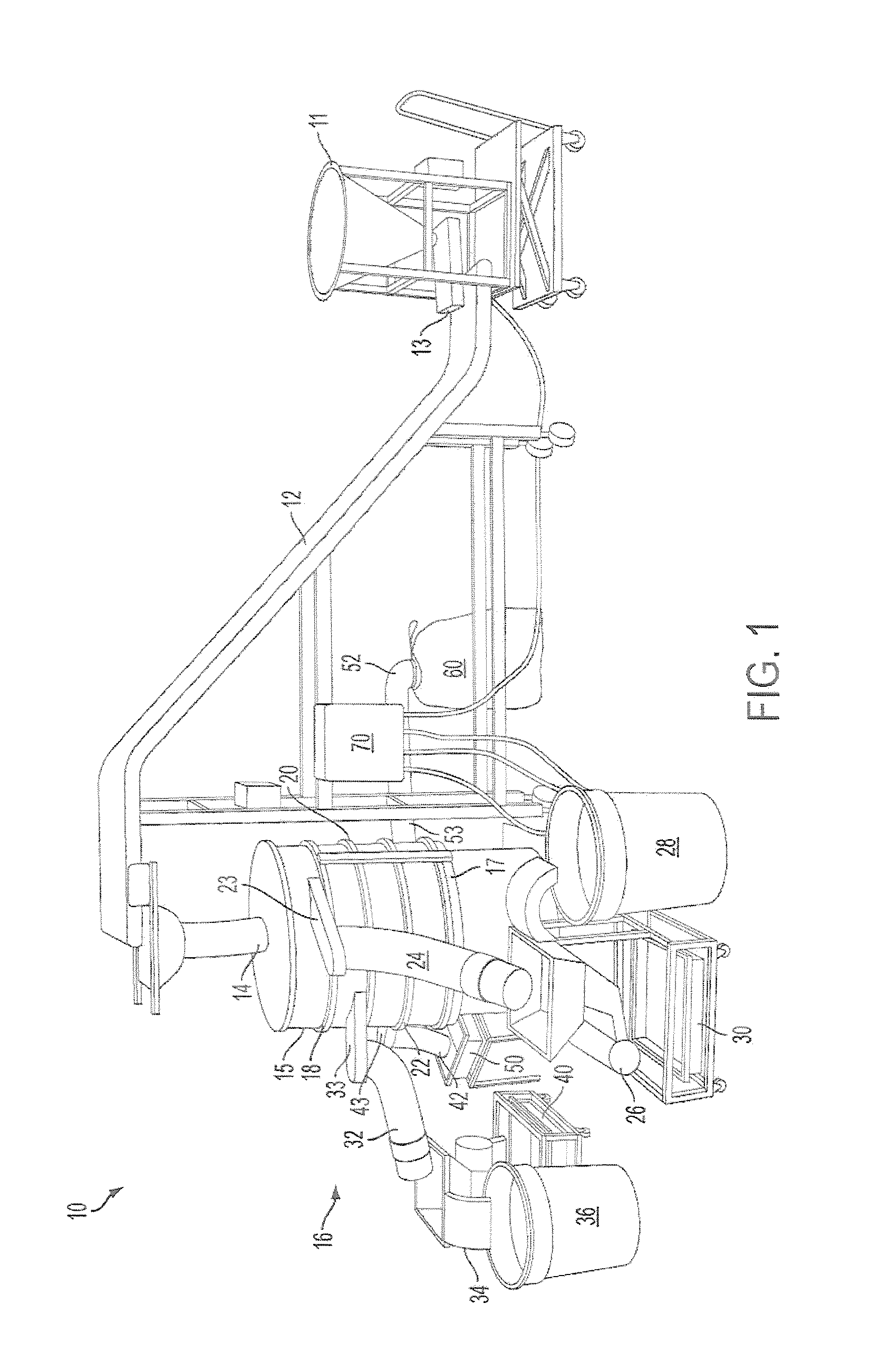Automated insect separation system
a separation system and insect technology, applied in the field of insect separation systems, can solve the problems of dust and frass that becomes airborne, the immediate environment of workers, and the dirty and time-consuming process of separating optimal-sized larva
- Summary
- Abstract
- Description
- Claims
- Application Information
AI Technical Summary
Problems solved by technology
Method used
Image
Examples
Embodiment Construction
[0015]The present invention is directed to an automated system that separates selected insects from an aggregate mix that includes the insects. Specifically, the system gently moves, cleans, and sorts two categories of commercial-sized mealworm larvae from the aggregate mixture. The mix includes the commercial-sized larvae, unconsumed food materials (usually wheat bran), smaller larvae, and insect frass.
[0016]As generally shown in FIGS. 1 and 2, the current process is initiated by directing the aggregate mixture into the system 10. Specifically, mixture is poured into an electronically controllable hopper mechanism 11. The hopper mechanism 11 includes a hopper control and vibrating apparatus 13 that ensures that the hopper 11 does not become clogged and that the aggregate mixture flows out of the hopper 11 at a preselected rate.
[0017]The aggregate mixture is directed from the hopper 11 onto a z-shaped conveyor 12. The conveyor 12 transports the mixture upwardly to an inlet 14 of an ...
PUM
 Login to View More
Login to View More Abstract
Description
Claims
Application Information
 Login to View More
Login to View More - R&D
- Intellectual Property
- Life Sciences
- Materials
- Tech Scout
- Unparalleled Data Quality
- Higher Quality Content
- 60% Fewer Hallucinations
Browse by: Latest US Patents, China's latest patents, Technical Efficacy Thesaurus, Application Domain, Technology Topic, Popular Technical Reports.
© 2025 PatSnap. All rights reserved.Legal|Privacy policy|Modern Slavery Act Transparency Statement|Sitemap|About US| Contact US: help@patsnap.com



